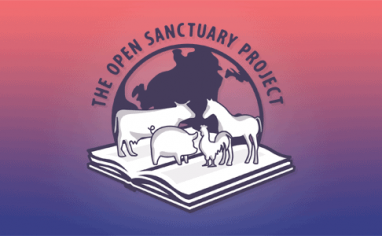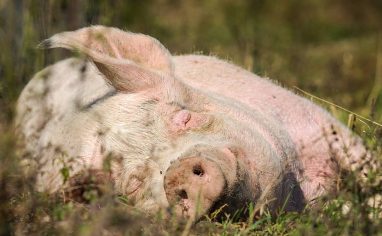
Subscribe To The Open Sanctuary Podcast
If you’d like to get the latest episodes of The Open Sanctuary Podcast, you can subscribe for free on all Podcast platforms, including Apple Podcasts and Spotify!
Episode Notes
Executive DirectorThe individual formally in charge of final decision making at an organization, who sometimes works closely with the organization’s Board of Directors. Sometimes a Founder is an Executive Director, especially early in a nonprofit’s growth stages. Mckenzee and NonprofitA non-governmental organization whose primary purpose is something other than selling goods or services. Specialist Julia discuss the critical importance of accuracy and transparency in communicating with supporters and the public. We discuss how these two values work hand in hand to maintain organizational integrity, how they might prevent your sanctuary or rescue from getting into adverse situations with others, and when being selective about your communications may be extra important.
—
This Episode’s Referenced Open Sanctuary Project Resources:
- Accuracy And Transparency: Two Critical Responsibilities Of Your Farmed Animal SanctuaryAn animal sanctuary that primarily cares for rescued animals that were farmed by humans. | The Open Sanctuary Project
- Managing Cruelty, Seizure, And Escapee Cases At Your Sanctuary Or Rescue | The Open Sanctuary Project
- A Starter Guide to Common Questions Your Sanctuary Gets Asked and How to Thoughtfully Answer Them | The Open Sanctuary Project
Episode Transcript (Auto-GeneratedThe following content was transcribed through an automated process and may contain transcription errors or misspellings.)
Julia Magnus: Welcome to another episode of the Open Sanctuary Podcast. I’m Julia, I’m the nonprofit specialist, and I’m here with my friend and executive director Mckenzee Griffler. Today we are going to address two critical responsibilities that any organization that relies on public support is going to need to keep in mind. And those responsibilities are accuracy and transparency both within your organization and to the public. Whether an organization is a formally incorporated nonprofit or not, animal sanctuaries that rely on the public for support must maintain a positive perception in their community so that individuals feel good about supporting the sanctuary in various ways through financial in-kind donations, volunteerism, social amplification, and even more. So, there’s a lot of realms in which these obligations apply, and we’ll address these one by one. Let’s dive into this topic. McKenzie, you ready?
Mckenzee Griffler: Yeah, that sounds great. You know, I think these are two words that they really go together like peanut butter and jelly or sun butter if you’ve got a nut allergy. And it’s a concept that was kind of new to me in this framework when I was just getting started with Open Sanctuary. But the more I think we looked into it and we thought about it, it’s like these are two things that really go hand in hand that are so important for any animal organization that has both internal and external messaging, which is most animal organizations, really important topics to always keep in hand and always to strive towards.
Julia Magnus: I totally agree. So, can we get into a few of the reasons why they’re so important, especially in this context?
Mckenzee Griffler: Absolutely. Number one, by virtue of an organization’s non-profit nature – and we’re talking the concept of being non-profitable, not necessarily formally incorporated or not – animal sanctuaries that rely on the public for support must maintain a positive perception in their community so that individuals, individual donors, the public, their neighbors feel good about supporting the sanctuary in various ways. And that could be through financial or in-kind donations, volunteerism, social amplification, just telling others in their community, “Hey, this is a great organization that I feel really good about.” Right? So, that’s some of the many benefits of having individuals feel good about you. And often animal sanctuaries are kind of given a little bit of the benefit of the doubt, at least at the beginning of their time as an organization; they are kind of highly regarded by the public because after all, the well-being of the residents is usually pretty evident to visitors who see them and engaging social media posts are really quick to demonstrate the ostensibly great things happening at many sanctuaries. But, and there’s always a but, if an animal sanctuary is found to be spreading inaccurate information or false stories either about individual residents or their care or their history, or to go more broadly, the state of animal agricultureThe human production and use of animals in order to produce animal products, typically for profit., the way that people treat animals generally, the response from the community could potentially cause a lot of backlash that could go as far as to threaten the continued operation of that organization, which might seem like a really wild leap, but we’ve seen it happen. So, depending on how significant that inaccuracy was and how it was spread, a false claim could even lead to legal retribution by organizations or individuals who feel like they’ve been maligned either fairly or unfairly by an animal sanctuary sharing critical facts that turn out to be less than factual. So that’s pretty serious. And you know, I don’t want to be really doom and gloom about this, but I think it just speaks to the critical value of being accurate and transparent whenever you’re talking to the public.
Julia Magnus: Yeah. No one ever wants something like that to escalate to the level of legal. It’s just terrible when that happens. It’s expensive. It’s stressful. So, just from the get-go, it’s really important to just keep these values, keep them close to your chest, keep them foremost in your mind as you embark on every element of your operations daily. So, why don’t we talk about that a little bit? What are the different areas of operation within a sanctuary where you have to particularly think carefully about accuracy and transparency?
Mckenzee Griffler: Well, hopefully the audience is starting to realize that we think that should probably be pretty important in all aspects of an organization’s operations. But I would say three really big ones, three really big buckets, if you will, that come to mind are legal and financial, education and outreachAn activity or campaign to share information with the public or a specific group. Typically used in reference to an organization’s efforts to share their mission., and general communications about residents, their care, rescues, and their stories.
Julia Magnus: Yeah, that makes a lot of sense. So, why don’t we kind of get into legal and financial, a run through the basics just so that those folks out there get a refresher and those new folks who are coming to this for the first time get an intro.
Mckenzee Griffler: Yeah, absolutely. And I know that these can seem like topics that are kind of squishy or like people don’t like dealing with them, but these are critically important for the sustainability of your organization to be aware of these things. So, when it comes to legal and financial transparency and accuracy, when people think about these things, they normally jump right to the obligations that are owed by organizations that are tax-exempt under the United States Section 501(c)(3) of the Internal Revenue Code. And that’s like that gold standard: “We’re a charitable nonprofit organization.” So, this includes filing complete and accurate Form 990s yearly with the IRS as well as whatever is required by your state. Your 990s are publicly available. Anyone can look up your 990. So, it’s really important to make sure to do these correctly. We do recommend that you consult with qualified professionals in your jurisdiction in order to make sure that you’re doing everything right. You should remember that if you are a 501(c)(3) nonprofit, you have an important obligation in that you hold the public’s trust, and that’s something you really want to maintain and make sure is really robust and that you’re trustworthy through the years. Making your 990s easy for the public to find and really clear explanations of them can also help foster more trust in your organization. Another way of publicly demonstrating your sanctuary’s commitment to financial transparency is by doing things like obtaining GuideStar’s Seal of Transparency or Charity Navigator’s four-star rating and displaying these credentials on your sanctuary’s website. Honestly, if you’re already committed to honest financial disclosure and doing things really properly, getting those seals is very simple. And a little plug, the Open Sanctuary Project has both of those things because we are very committed to those things as well because we like to talk the talk, walk the walk. If we say that something’s good for nonprofit animal organizations, we try to demonstrate it by doing the same ourselves. When it comes to these external accreditations, the process of getting them is also a great way to do a kind of self-audit and make sure that everything is going the way that it should within your organization. You can involve multiple tiers of administration caregivers because they ask for a little bit more than what the IRS does in the 990, and it’s a really good way to make sure that everyone is on board with the accuracy and transparency values.
Julia Magnus: Absolutely. And as an executive director, I think going through those two processes with my board was really great just for checking in on things and being like, “Oh yeah, either that is something we do, we should highlight it, or that’s something we should put into practice more.” So, those are really helpful tools. They don’t cost you anything and they stand to really help benefit you and educate the public on the good that you’re doing and the transparency that you’d like to demonstrate. So, that covers the basics of what you need to do in terms of legal and financial accuracy and transparency for 501(c)(3) organizations. But what about if you’re a grassroots organization?
Mckenzee Griffler: So, if you’re a grassroots organization, which we’ll define as an organization that is doing the work without necessarily having a formal charitable status or a charitable organization structure, these are still really important values. Accuracy and transparency are still critically important because first, it’s really important to be honest with supporters and stakeholders that you do not have nonprofit status. For donors, this can be important because it means that if you don’t have a fiscal sponsor, their donations are not tax-deductible. And sometimes people might just assume that if you’re doing non-profitable work with animals, you are a nonprofit. And that might be true in spirit, but it might not be true federally. For potential partners and collaborators, such as animal sheltersOrganizations, either government-funded and maintained or not-for-profit and funded by charitable contributions, with a physical infrastructure in which homeless animals are cared for and offered for adoption., nonprofit status or sponsorship by a nonprofit might be a requirement for certain activities. Also, just because you’re not a nonprofit, that doesn’t mean that you shouldn’t be clear and transparent about what you’re doing with funds raised or resources donated. Both nonprofitsNon-governmental organizations whose primary purpose is something other than selling goods or services. and grassroots organizations can do things like, for example, posting their significant veterinary expenses directly on their website. And while this level of disclosure isn’t required, it is one model of providing transparency to anyone who might want to know where their dollars are going.
Julia Magnus: Yeah, that feels really important to me. And as somebody who does grassroots animal rescueAn organization that helps secure animals from dangerous or unacceptable situations. As organizations, rescues may or may not have dedicated permanent infrastructure for housing animals. work, I know that it’s something that people appreciate is that we take the time to explain that if you donate directly, then you cannot deduct that from your taxes. But you can get a deduction if you donate through a fiscal sponsor that we have. That level of clarity is something that folks really appreciate, especially when they’re making larger donations because you don’t want to have them make a generous donation and then discover suddenly at the end of the tax year that they can’t deduct that. So, very important.
Mckenzee Griffler: Absolutely. And a smaller side note with financial transparency, it can be really important depending on your jurisdiction and how you word things about when you’re raising money for a cause to be clear about where that money is going. So for instance, if you’re highlighting one resident going through a medical situation, are the funds raised for that situation all going to only that situation or could they be used for other things? And that could be as simple as saying, “Your donation will help with Charlie Rooster’s care in addition to the care of others like him and other assorted expenses.” And just that little extra bit of transparency and a little bit of accuracy about where it’s going can go a long way for people to make sure that they know where their support is directly going.
Julia Magnus: Yeah. Yeah. And even to add on to that a little bit, let’s assume Charlie Rooster has a medical procedure. You’re fundraising for this medical procedure. Let’s say in the unfortunate event that Charlie Rooster does not make it, it’s really important to be clear that if funds raised exceed the cost of Charlie Rooster’s care, those funds will go to other residents. Because I’ve seen situations where that scenario happened and people were like, “Well, what happens to my donation then? Can I get it back?” But if you have that added level of, “Additional funds over the cost of will go to the care of our other residents,” then that can clear that up from the get-go.
Mckenzee Griffler: Absolutely. So, that is some of the basics of financial and legal transparency. How about we talk about the general importance of accuracy and transparency when it comes to education and outreach and especially when it comes to claims about animal agriculture? So, while sanctuary education and outreach programs are generally successful in initially garnering support from sympathetic members of the public who’ve just visited a sanctuary space in some way, maintaining ongoing support requires that sanctuaries continually recommit to sharing information with the public that is accurate and transparent. So what that means is if an animal sanctuary is found to be spreading inaccurate information or false claims about animal agriculture, individual organizations especially within animal agriculture or individuals in the community could even lead to things like legal retribution from those who feel like they’ve been maligned by an animal sanctuary sharing critical facts that turn out to be less than factual. And while this isn’t a horribly pervasive issue, there have been a number of prominent occasions when farmed animal sanctuariesAnimal sanctuaries that primarily care for rescued animals that were farmed by humans. and animal rescuesOrganizations that help secure animals from dangerous or unacceptable situations. As organizations, rescues may or may not have dedicated permanent infrastructure for housing animals. have been caught providing false information to the public. Beyond the damage caused to the individual organizations, each of these occurrences also carries the risk of contributing to skepticism of the farmed animalA species or specific breed of animal that is raised by humans for the use of their bodies or what comes from their bodies. sanctuary movement more generally. So for this reason, we believe that every sanctuary should commit to providing the public with information that is honest and accurate wherever possible.
Julia Magnus: Yeah, I kind of want to chime in on that because it just made me think when you said that of the situation where there’s a, I guess for lack of a better term, like a hobby farm in the area which was being protested by a number of activists who made a lot of statements about things that were supposedly going on at this farm, and those activists ended up being subject to a SLAPP lawsuit. A SLAPP lawsuit is essentially a lawsuit to quiet dissenters from a particular activity, from engaging in the activity. And there is legislation to protect activists and protesters, but you still have to go through court to get it. These folks went through a real time with it. Some folks even changed their names ultimately. So, it’s not a joke. Making the false claims or exaggerated claims can lead to real consequences that are not ones you want to deal with.
Mckenzee Griffler: And as I think we’ve said more than once on this podcast, the realities of animal agriculture as they are are often overwhelming and quite grim. The staggering scale of the issues involved are stark and they don’t need embellishment. So there’s no reason to exaggerate any numbers or standard practices in animal agriculture. In fact, providing incorrect or inaccurate information during education and outreach efforts can put a sanctuary at significant risk of losing public support or the attention of more skeptical visitors who might already be looking for a reason to mistrust their message and discredit their missionThe stated goals and activities of an organization. An animal sanctuary’s mission is commonly focused on objectives such as animal rescue and public advocacy. altogether. The other side of this is considering how animal sanctuaries promote alternatives to animal productsAnything that originates from an animal’s body, including things like their eggs, feathers, flesh, honey, milk, and wool. and animal exploitationExploitation is characterized by the abuse of a position of physical, psychological, emotional, social, or economic vulnerability to obtain agreement from someone (e.g., humans and nonhuman animals) or something (e.g, land and water) that is unable to reasonably refuse an offer or demand. It is also characterized by excessive self gain at the expense of something or someone else’s labor, well-being, and/or existence.. So, if your sanctuary chooses to do this, it’s critically important that the information you provide on these alternatives be as truthful and accurate as possible, especially if it pertains to human health. For example, if the sanctuary representative is promoting an alternative product based on contested or purely anecdotal data, they should be sure to present it as a personal endorsement rather than the sanctuary’s position. Similar to sharing inaccurate facts about animal agriculture, making inaccurate claims about alternative products and practices can alienate folks who need to hear a sanctuary’s compassionate message the most. So, there’s a lot of potential downsides to playing a little fast and loose with accuracy, with transparency, with data as it exists. And one way to ensure that your sanctuary’s representative, your volunteers, your staff, etc., are sharing accurate information with your visitors is to provide them with literature from reliable sources. There are a lot of organizations out there putting out very highly vetted information both about animal agriculture and compassionate alternatives to animal products and daily lifestyle choices. And these can come in affordable, well-produced brochures and booklets that visitors can peruse and share with their communities. Some organizations will even give out this information to sanctuaries for free.
Julia Magnus: Yeah. Yeah, definitely. So, those are some general considerations about education and outreach and narratives about animal agriculture and alternatives to it. But how about let’s go sort of inside the sanctuary? What about education and communication with the public about your specific residents, your rescues, and the care that you offer to your residents?
Mckenzee Griffler: Absolutely. So, as a short example, if one of your residents didn’t come from a factory farmAn intensive agricultural operation that prioritizes large volume animal product production using strict production methods, typically away from the public eye., don’t imply that they came from a factory farm. That resident has their own equally enlightening story to tell, perhaps about a different, less commonly considered form of harmThe infliction of mental, emotional, and/or physical pain, suffering, or loss. Harm can occur intentionally or unintentionally and directly or indirectly. Someone can intentionally cause direct harm (e.g., punitively cutting a sheep's skin while shearing them) or unintentionally cause direct harm (e.g., your hand slips while shearing a sheep, causing an accidental wound on their skin). Likewise, someone can intentionally cause indirect harm (e.g., selling socks made from a sanctuary resident's wool and encouraging folks who purchase them to buy more products made from the wool of farmed sheep) or unintentionally cause indirect harm (e.g., selling socks made from a sanctuary resident's wool, which inadvertently perpetuates the idea that it is ok to commodify sheep for their wool). against their species. It’s also more than likely that there are other similar individuals in your care who did come from factory farmsIntensive agricultural operations that prioritize large volume animal product production using strict production methods, typically away from the public eye. and whose stories you can share without stretching the truth. As another example, if your sanctuary was not significantly involved in the rescue effort of a current resident, do not position your organization’s role in an inaccurate light. Commitment to lifelong compassionate care is an admirable undertaking all on its own, and it does not need additional embellishment that could permanently sour relations between sanctuaries and rescuers and supportive community members. While this isn’t a horribly pervasive issue, there have been a number of prominent occasions where farmed animal sanctuaries and animal rescues have been caught providing false information to the public. That’s never really a good sign. I’ve definitely seen, for example, here there was one organization that was just making assumptions about an individual that they rescued that this individual was subject to torture, all kinds of practices even outside and beyond what happens in animal agriculture. And lo and behold, that was likely not the case. And they were found to have been exaggerating the situation, which did not end well. They were trying to fundraise for the legitimate medical needs of this individual, but the fact that they had exaggerated in this fashion ended with folks asking for donations back, people formally cutting ties with the organization, and it was not a great look. So, it does seem like that’s a really important, you know, their stories are enough; you don’t need to make up more for the sake of donations. It just doesn’t look good.
Mckenzee Griffler: And, you know, we understand the impulse to say, “Well, we have to make this a really compelling, compassionate, really heartwarming story because that’s how we’re going to get this support that we need.” But we really caution you against doing that and really trying to lean into accuracy and transparency because we do believe that the long-term benefit to the sustainability and reputation of your organization supersedes any individual fundraising need.
Julia Magnus: Yeah, I totally agree. Now, as we often say, there’s always a “but,” right? And so there are a lot of things that you should be very transparent and accurate about with the public, but there are exceptions at times, and there may be situations where it may not always be the best idea to share information with the public. So, can we get into that nuance a little bit and can you describe some of those situations?
Mckenzee Griffler: Yeah, absolutely. I think what we’re getting at is while it’s really important to have accuracy and transparency in your communications at your sanctuary, that doesn’t mean that it is your responsibility to share literally everything that happens at your sanctuary. Not that you’re trying to hide things from the public, but some things just aren’t appropriate to share for certain reasons. A sanctuary should always be mindful, for instance, of what should be shared and what might be best left to a private matter. So, for instance, some basic health care of residents, such as pig resident hoof trimming, might appear to be less compassionate to those unaware of the process, and that could cause more misunderstanding than enlightenment if just shown to the public without proper context. I’m sure a lot of our listeners are well aware that pig hoof trimming is critical and pigs really can’t often live very high-quality lives given overgrown hooves. But a lot of pigs aren’t big fans of it. And that’s kind of similar to how a lot of cats and dogs aren’t very happy about getting their claws trimmed. But we know that it’s important. But a lot of the times without the proper context of what’s going on, imagine someone had never seen someone’s friendly dog before freaking out because their claws were getting trimmed in a completely harmless process. It can cause a lot of distress if just presented without comment, without context, without explanation. Another example of when you might want to withhold information from the public is if you receive residents as a function of a law enforcement-related action, such as a seizure in a cruelty case. Because keeping intakes of this type private, at least until relevant legal proceedings are concluded, can help protect your residents and the integrity of such proceedings and ensure that the residents have a safe landing place and a comfortable forever home and the proceedings of whatever legal action is taking place don’t get complicated or even overturned due to untimely sharing of information to the public.
Julia Magnus: Yeah. Yeah, that one’s really important both from a safety lens and from a legal perspective. It’s always important to be really clear with any agencies you might be working with in those contexts to know exactly what you can and cannot share and maybe what you should and shouldn’t. Even if you can technically share it, maybe you shouldn’t for reasons. So, yeah, there’s not a lot of times when we’re like, “Oh, yeah, definitely shut down all communications. Don’t talk to the public about what’s going on.” But this is to say that there’s always a little bit of nuance in some of these decisions and to really think about what you’re sharing, what you’re trying to get out of sharing it, and why. And always try to lean into the values of being as honest and accurate as possible. Something else just occurred to me. Maybe it’s like an “explain it like I’m five” situation. If you are trying to explain something that might not look right to somebody who’s not well-versed with the care of farmed animalsA species or specific breed of animal that is raised by humans for the use of their bodies or what comes from their bodies., explain it like they’re five from the beginning. Provide the proper context. And then if you can’t really see how to make a way clear to explain it like the person you’re explaining to is five, maybe it’s something that you might want to reconsider sharing.
Mckenzee Griffler: Yeah. Or just always think about what’s your goal and how can we achieve this goal without misleading the public.
Julia Magnus: Thank you so much McKenzie for explaining all that. I really appreciate it.
Mckenzee Griffler: Very happy to. And thank you for chatting with me about this important topic.
Julia Magnus: Yeah, I think this discussion has been really helpful in illuminating why the farmed animal sanctuary movement as a whole depends on each and every organization’s commitment to a high standard of providing accurate information and being as transparent as possible. These values really help our movement maintain its integrity and positive perception as a whole. And we really hope that this podcast helps farmed animal sanctuaries and rescues consider the various ways it can commit to these critical practices and responsibilities. I want to point out that we do have a full resource on this subject which you can find at opensanctuary.org, or if you just search “accuracy and transparency” and we’ll drop that in the show notes along with a few other resources you might want to take a look at. And if there are more subjects that we can cover that could be useful to you, please feel free to contact us via our contact page at opensanctuary.org. We’re always super happy to hear community feedback and we welcome suggestions for new resources. If you found this information helpful, we are a 501(c)(3) nonprofit organization. Yes, we are and we’re on GuideStar and Charity Navigator. You can go look. So, your donations are tax-deductible and help us sustain our mission of providing freely accessible resources so that every sanctuary is a success story. Also, if you enjoyed this podcast, please consider leaving a five-star review which will help others find this information as well. Thank you so much for listening. Thanks, Mckenzee. Again, thanks for all your support and we look forward to talking to you next time.
Mckenzee Griffler: Thanks for listening, folks.

Got A Podcast Idea? Contact Us!
If you have a topic or question you’d love to hear our staff address on The Open Sanctuary Podcast, please get in touch via our contact form!








